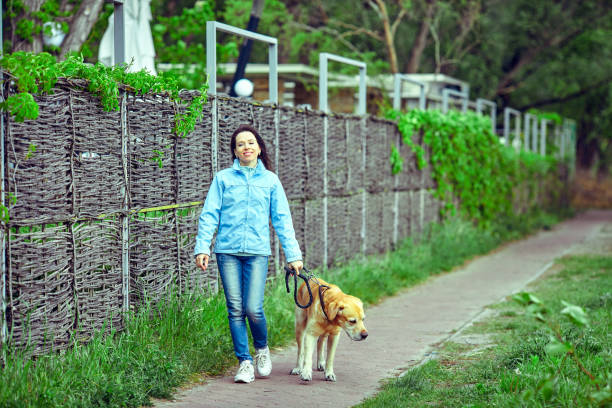As a pet owner, ensuring your dog’s safety and freedom is a top priority. One of the most effective ways to achieve this is by installing a dog fence. Whether you’re trying to protect your dog from outside dangers or prevent them from wandering too far, a well-chosen dog fence provides peace of mind. In this article, we’ll explore the different types of dog fences available, the pros and cons of each, and essential tips for installation and maintenance.
Why Invest in a Dog Fence?
Dogs are naturally curious creatures, and their instincts often lead them to roam, chase animals, or explore their surroundings. A fence helps create a boundary that prevents your dog from straying into danger or bothering neighbors. Additionally, dog fences offer several benefits, including:
- Safety: A fence provides a safe area for your dog to play without the risk of running into traffic or getting lost.
- Exercise: Dogs need regular exercise to stay healthy. A fenced yard allows them the freedom to run and play.
- Peace of mind: You can relax knowing your dog is secure and won’t wander off.
- Protection: A dog fence can keep other animals out, reducing the risk of encounters with aggressive wildlife or stray animals.
Types of Dog Fences
There are several different types of dog fences to consider, depending on your needs, your dog’s behavior, and your budget. Below, we’ll discuss the most common options available on the market.
1. Traditional Wooden or Metal Fences
These fences are a popular choice for pet owners and can be made of materials such as wood, vinyl, aluminum, or chain-link. They provide a physical barrier that not only keeps your dog contained but also offers privacy and security.
- Pros:
- Durable and long-lasting
- Effective at keeping large or energetic dogs contained
- Offers visual privacy and protection from outside distractions
- Cons:
- Installation can be expensive and labor-intensive
- May require maintenance such as repainting or replacing damaged sections
- Large dogs can potentially jump over or dig under them, depending on height and fence design
2. Invisible or Wireless Dog Fence
Invisible or wireless dog fences work by creating a boundary that your dog cannot see but can feel. The system consists of a transmitter, a receiver collar worn by your dog, and sometimes buried wires to define the boundary. When your dog approaches the boundary, the collar emits a warning sound, followed by a mild electric shock if the dog continues to move forward.
- Pros:
- Invisible and does not affect the appearance of your yard
- Can be used to cover large or irregularly shaped areas
- Often more affordable than traditional fences
- Cons:
- Some dogs may not respond well to the shock or may become anxious
- Does not keep other animals out of your yard
- Requires training and supervision to ensure effectiveness
- Batteries in the collar need regular replacement
3. Portable Dog Fence
A portable dog fence is ideal for pet owners who need flexibility. These fences are often made from lightweight metal or plastic and can be moved from one location to another. They’re perfect for camping, temporary housing, or for creating a small containment area in a large yard.
- Pros:
- Easy to move and set up
- Great for short-term or temporary use
- Affordable compared to permanent fencing solutions
- Cons:
- May not be suitable for large or strong dogs that can knock it over
- Limited containment area
- Less durable than permanent fences
4. Electric Dog Fence
An electric dog fence works similarly to an invisible fence, but the wire is buried underground, creating an invisible boundary. When the dog approaches the boundary, the collar emits a static correction to deter them from crossing.
- Pros:
- Hidden, does not affect the look of your yard
- Allows for customizable boundaries, including around gardens or pools
- Works well for dogs that are known to jump over or dig under traditional fences
- Cons:
- Requires some technical knowledge to install the wiring
- Not suitable for aggressive dogs that might ignore the shock
- Can be expensive if covering a large area
5. Living Fence (Hedges or Shrubs)
For a natural and aesthetically pleasing option, many homeowners opt for living fences made from hedges, shrubs, or trees. This option takes time to establish but can provide both a boundary and privacy.
- Pros:
- Blends naturally with the landscape
- Environmentally friendly and can improve curb appeal
- Can deter noise and provide shade
- Cons:
- Takes time to grow and may require temporary fencing in the meantime
- Requires regular pruning and maintenance
- Not effective for dogs that like to dig or can slip through small gaps
Choosing the Right Fence for Your Dog
Selecting the right type of dog fence depends on several factors, including the size and temperament of your dog, your property layout, and your personal preferences. Here are a few things to consider:
- Dog Size and Breed: Larger dogs may require taller and more robust fences to prevent jumping or climbing. Energetic or athletic breeds may be more inclined to escape if they see something interesting outside the boundary.
- Dog’s Behavior: If your dog tends to dig, you’ll want to consider fencing options that can be buried below ground to prevent them from tunneling out. If your dog tends to be anxious, an electric or invisible fence may cause more harm than good.
- Property Size and Shape: Large properties or irregularly shaped yards may benefit from wireless or invisible fencing systems, which can cover more ground without the need for physical barriers.
- Aesthetic Preferences: Some pet owners prefer fences that blend into the landscape, such as living fences or invisible options, while others want the added privacy and security of a traditional wooden or vinyl fence.
- Budget: While traditional wooden or metal fences may be more durable, they often come with a higher price tag. If you’re on a tight budget, a portable fence or invisible fence might be a better option.
Installation and Maintenance Tips

Once you’ve chosen the right fence for your dog, proper installation is crucial to ensure its effectiveness. Here are a few tips:
- Follow Manufacturer Guidelines: If you’re installing an invisible or electric fence, read the instructions carefully to ensure the system is set up correctly.
- Train Your Dog: With any fence, but especially invisible and electric fences, training is essential. Teach your dog where the boundaries are and how to react to the warning signals.
- Check for Weak Spots: Regularly inspect your fence for any weak points, such as holes in a traditional fence or malfunctioning equipment in an invisible system.
- Maintain the Fence: Depending on the type of fence, you may need to repaint, replant, or replace parts over time. Keeping up with maintenance ensures the fence remains effective and safe.
Conclusion
Choosing the right dog fence is a critical decision for ensuring your dog’s safety and happiness. Whether you opt for a traditional wooden fence, a high-tech invisible system, or a natural living barrier, there’s a solution that will suit both your pet and your home. By considering your dog’s behavior, your property, and your budget, you can find the perfect dog fence to keep your furry friend safe and secure for years to come.


